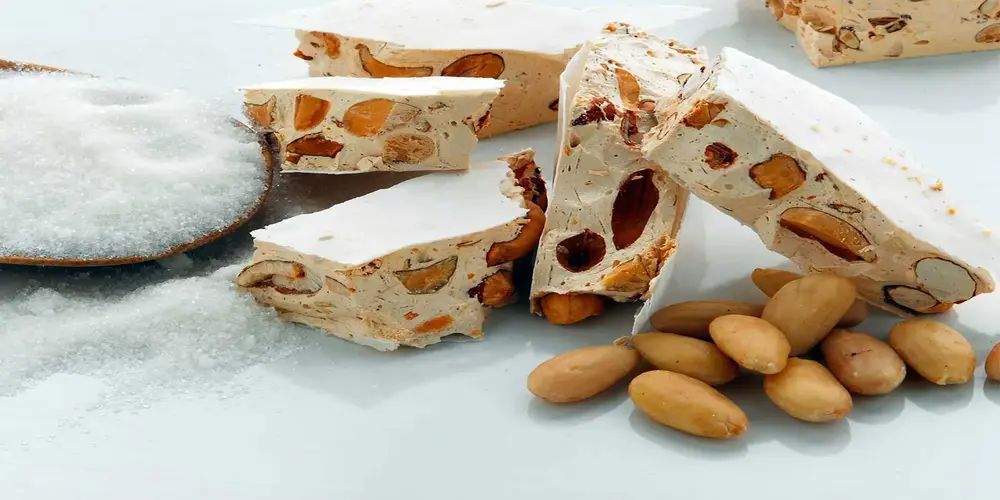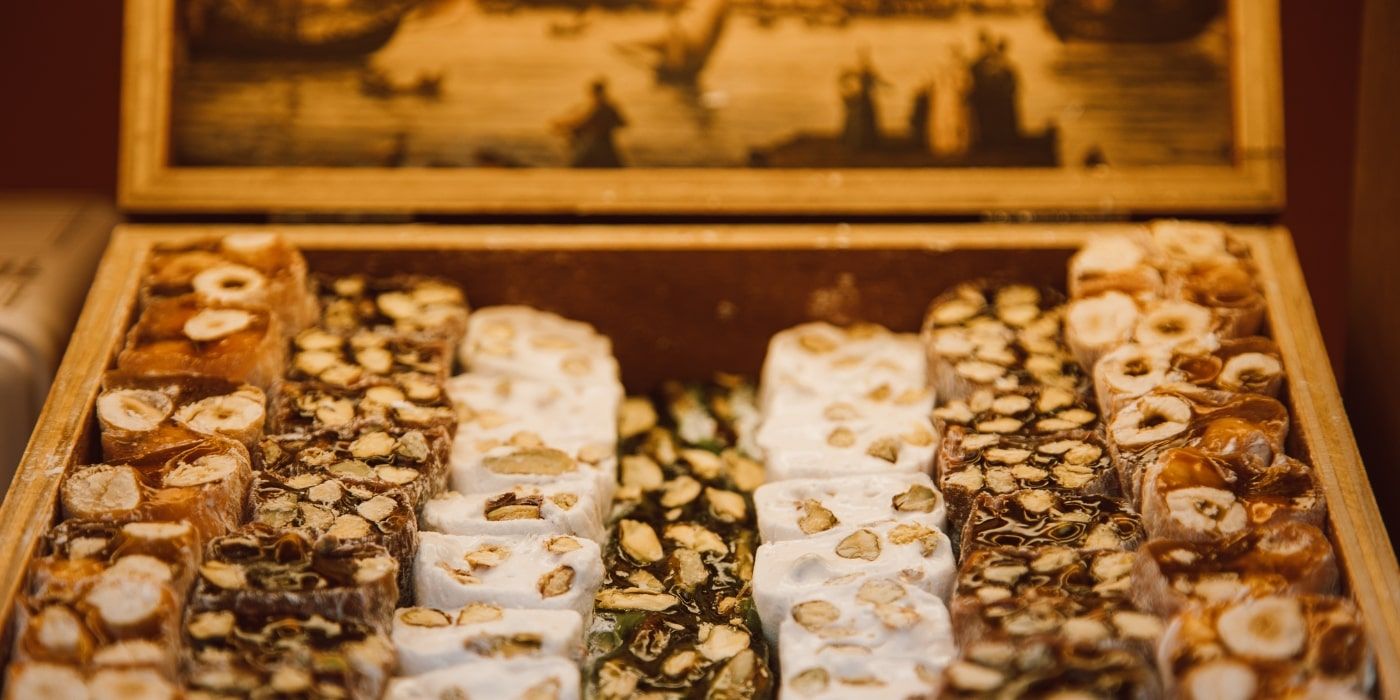It exists in all sorts of types - soft, crispy, chocolate, with almonds - and more than one region of our country claims its invention: nougat, torrone in Italian, is a delicacy featured by an intense, distinctive and embracing flavor, a crunchy, caramelized stick that immediately recalls cold weather and Christmas atmospheres.
Several traditions concern this specialty, almost just as many as the recipes behind its preparation, but here we will focus on the traditional variant from the city of Cremona.
Thus, lets discover together how to cook torrone and everything that orbits around its origins.
Want to discover Lombardy? Visit Milan
How to make Italian torrone: ingredients and preparation

500 gr peeled almonds
200 gr unsalted pistachios or hazelnuts
250 gr acacia honey
300 gr sugar
3 egg whites
1 packet of vanillin or vanilla flavoring
100 ml water
2 lemon zest
2 wafer sheets
Using these doses you will learn how to cook torrone, the Italian for nougat, from the Cremona's tradition, crunchy but quite soft on the inside, and you will get three quite long sticks (about 300 g each), using a baking pan of about 20 cm x 22 cm.
Start by melting the honey in a double boiler; it will need to be there for about an hour. Little trick: pour a drop into some water and if you see it solidify, that means it is ready.
Meanwhile, caramelize the sugar in a pot, then add the water. After about 20 minutes it will become a white liquid.
Whip the egg whites until they are foamy, so add honey and sugar syrup. Stir until you have obtained a fairly firm mixture.
Now add the previously roasted almonds and other dried fruit, vanilla or vanillin, and the grated lemon zest. Blend together well to incorporate the mixture.
Now take the baking pan and line it with one of the wafer sheets, then pour in the mixture and level it and then cover it with the other sheet. Mash it down so that it creates a perfectly rectangular block and let it cool for at least half an hour.
The nougat is now solidified: turn the pan upside down and cut strips lengthwise to obtain the classic shape of torrone or small bricks if you want to make torroncini. They will be perfect to be gifted or to be simply enjoyed.
Buon appetito!
Nougat: the origins
Nougat, the Italian torrone, is a typical patisserie specialty that belongs to different Italian regions, each infusing in it unique features of its territory and its own peculiar ingredients, creating different recipes depending on its origin.
Although it immediately recalls Christmas, some types can be enjoyed generically in winter or even in autumn, as early as October and November. In Naples, for example, a soft chocolate and hazelnut nougat is prepared for the Day of the Dead, November 2. In the province of Benevento, on the other hand, there are various kinds of torroni and torroncini, which, even if mostly purchased during the holidays, are also available during the rest of the year, thanks to the Strega brand - that one of the local liqueur.
But it also assumes other regions flavors, such as Calabria, Sardinia, Tuscany, Sicily, and Abruzzo: in short, you have a really wide choice!
We must emphasize, however, that the birth of torrone is typically to be traced back to Cremona, whose shape and name recall the famous Torrazzo, the bell tower of the Duomo. In fact, it seems that it first appeared in 1411, at the wedding banquet of Francesco Sforza and Bianca Maria Visconti.
According to another theory, however, nougat would have Arab origins and would derive from a dessert made with almonds, sesame and honey introduced by merchants from the Mediterranean area who settled in the Po Valley delta.
Currently, the first hypothesis is the most accepted, and every year in November Cremona celebrates the Festa del Torrone (Nougat Festival), where alongside exhibitions and tastings there is a historical commemoration of the wedding that is said to have given birth to this specialty.
Book your hotel in CremonaHow to make Italian torrone: variations
Nougat, as anticipated, is suitable for many variations, the only rule to follow is your own personal taste: you can choose any dried fruit, cover it with milk or dark chocolate, add the grated zest of an orange. Of course, you can also change the process if you want to get an even crispier or, on the contrary, a softer one.
In the latter case, we recommend you try the delicious nougat of the dead, O' Murticciell', a specialty from the Neapolitan tradition that we have already mentioned, created to "sweeten" the parting with our loved departed and which is eaten precisely on the day dedicated to them. It is a long log covered in dark chocolate, with a filling of hazelnut cream, hazelnuts and white chocolate that remains soft and melts in the mouth, which is why it is cut into slices.
In short, if you really want to learn how to cook torrone according to the Italian tradition, all you have to do is let your gluttony guide you.
About the author
Written on 27/10/2023



Denise Penna
A typically cold-month bakery delicacy, claimed by more than one Italian region: find out how to make Italian torrone.